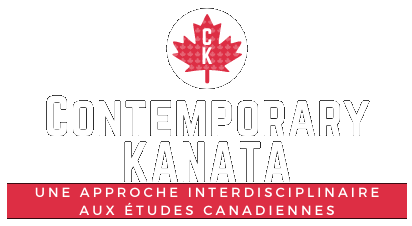Articles
No. 2 (2024): Contemporary Kanata: Interdisciplinary Approaches to Canadian Studies
A Critical Reflection of the Disturbing Underrepresentation of Filipinos in Higher Education
Résumé
Les Philippins sont l’un des groupes minoritaires les plus importants au Canada et, chaque année, le taux d’immigration dans le pays continue de grimper. Selon le rapport de Statistique Canada datant de 2010, les Philippines étaient la source primaire d’immigrants visibles au Canada, surpassant l’Inde et la Chine, qui se retrouvent habituellement en première place du à leurs impressionnantes populations (Chagnon, 2013). Malgré la présence grandissante des Philippins au Canada et leurs contributions continues à l’économie canadienne, les Philippins demeurent gravement sous-représentés dans les institutions universitaires et en éducation postsecondaire dans le pays. De plus en plus de textes littéraires reconnaissent maintenant les enjeux et barrières systémiques qui affectent de façon disproportionnée les immigrants philippins et les facteurs qui empêchent ces jeunes de poursuivre des études universitaires (Mendoza, 2018). Le gouvernement canadien maintient qu’en tant que pays multiculturel dominant dans le monde, le Canada a réussi à faire de la place et à créer des opportunités qui mènent à l’équité, l’inclusion, et la mobilité des populations immigrantes (Brosseau et Dewing, 2009, Revised 2018). Si c’est le cas, cette promesse doit être cultivée afin d’assurer que tous les groupes racialisés et marginalisés sont inclus et en bénéficient. Toute disparité ou problème doit donc être examiné et adressé. Ce texte critique réfléchi analysera les événements importants que j’ai personnellement vécus et qui ont grandement influencé ma décision de poursuivre des études postsecondaires. L’emphase sera sur les modèles, les connexions et réseaux inadéquats, l’instabilité financière, et le manque de support parental comme raisons possibles du manque de philippins dans les institutions universitaires canadiennes.
Références
- Abada, Teresa, & Tenkorang, Eric Y. (2009). Pursuit of university education among the children of immigrants in Canada: the roles of parental human capital and social capital. Journal of Youth Studies, 12(2), 185–207.
- Baum, Sandy, & Flores, Stella M. (2011). Higher Education and Children in Immigrant Families. The Future of Children, 21(1), 171–193.
- Brosseau, Laurence, & Dewing, Michael (2009; Revised 2018) Canadian multiculturalism. Legal and Social Affairs Division: Parliamentary Information and Research Service. Retrieved from https://lop.parl.ca/staticfiles/PublicWebsite/Home/ResearchPublications/BackgroundPapers/PDF/2009-20-e.pdf
- Canadian Association of University Teachers. (2018). Underrepresented & underpaid: Diversity & equity among Canada’s post-secondary education teachers. Retrieved from https://www.caut.ca/sites/default/files/caut_equity_report_2018-04final.pdf
- Chagnon, Jonathan, (2013). Migration: International, 2010 and 2011. Statistics Canada. Retrieved from https://www150.statcan.gc.ca/n1/en/pub/91-209-x/2013001/article/11787-eng.pdf?st=GmoFKnPg
- Chávez, Noé R., Race, Alexandra, Bowers, Marisa, Kane, Susan, & Sistrunk, Christopher. (2019). Engaging underrepresented adolescents in authentic scientific settings: Scientist role models and improving psychosocial outcomes. J STEM Outreach, 2(1). Retrieved from https://www.ncbi.nlm.nih.gov/pmc/articles/PMC8078839/pdf/nihms-1555158.pdf
- Chun, G. (2014). A study of the underrepresentation of Filipinos in higher education. University of Hawaii at Manoa.
- Kelly, Philip. (2014). Understanding intergenerational social mobility: Filipino youth in Canada. Canadian Electronic Library. Retrieved from https://irpp.org/wpcontent/uploads/assets/research/diversity-immigration-and-integration/filipinoyouth/kelly-feb-2014.pdf
- Lawner, Elizabeth, Quinn, Diane M., Camacho, Gabriel, Johnson, Blair T., & Pan-Weisz, Bradley. (2019). Ingroup role models and underrepresented students’ performance and interest in STEM: A meta-analysis of lab and field studies. Social Psychology of Education, 22(5), 1169–1195.
- Lockwood, Penelope. (2006). “Someone like me can be successful”: Do college students need same-gender role models? Psychology of Women Quarterly, 30(1), 36–46.
- Mendoza, Maureen Grace. (2018). Educated minorities: The experiences of Filipino Canadian university students. In Filipinos in Canada (pp. 360–381). University of Toronto Press.
- Mishra, Shweta. (2020). Social networks, social capital, social support and academic success in higher education: A systematic review with a special focus on “underrepresented” students. Educational Research Review, 29, 100307, 24pp. 31
- Morgenroth, Thekla, Ryan, Michelle K., & Peters, Kim. (2015). The Motivational Theory of Role Modeling: How Role Models Influence Role Aspirants’ Goals. Review of General Psychology, 19(4), 465–483.
- Nadal, Kevin, Pituc, Stephanie T., Johnston, Marc P., & Esparrago, Theresa. (2010). Overcoming the model minority myth: Experiences of Filipino American graduate students. Journal of College Student Development, 51(6), 694–706.
- Saari, Margaret, Patterson, Erin, Kelly, Shawna, & Tourangeau, Ann E. (2018) The evolving role of the personal support worker in home care in Ontario, Canada. Health & Social Care in the Community, 26(2), 240–249.
